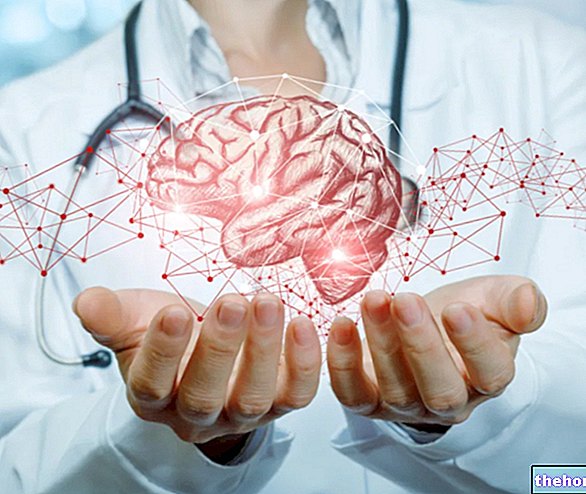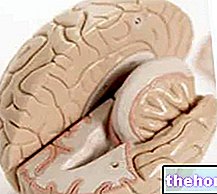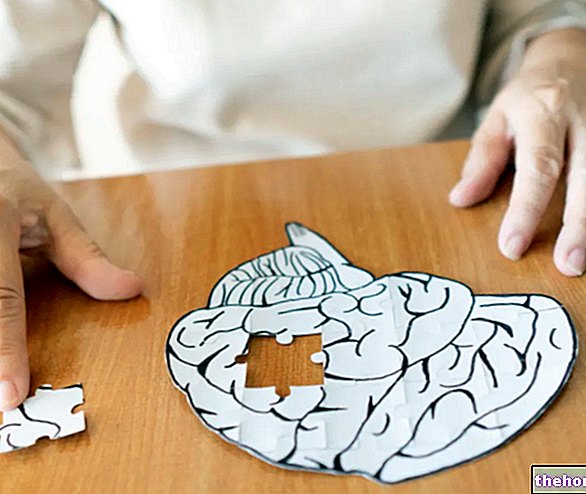A fairly common condition, depression is a disorder that can affect both adults - young and old - as well as children.
Depression affects both men and women; however, several estimates suggest it is more common in the female population.
For further information: Depression: What is it, Symptoms and How to Treat It?Masked Depression
Masked depression occurs through somatic symptoms such as gastrointestinal (abdominal cramps, diarrhea), heart (palpitations), or respiratory (wheezing) disturbances. Some of the non-affective aspects of depression are then amplified.
Anxious Depression
Anxious depression includes symptoms that are more often reminiscent of anxiety disorder, such as panic attacks or agitation.
In the hypochondriac variant, the subject is tormented by the fear of having a disease; in the most serious cases, the subject is certain that he has a disease, with non-removable delirium and a high risk of suicide.
Atypical depression
Atypical depression is manifested by symptoms such as: panic attacks, hypersomnia and continuous sleepiness during the day, hyperphagia and weight gain, irritability, high sensitivity to the judgment of others and to the loss or separation from a family member.
It is the signal that many of the manifestations listed above tend to get worse in the evening.
Hysteroid dysphoria
Hysteroid dysphoria represents a particular form of atypical depression.
This disorder mainly affects the female sex; in particular it manifests itself in those women who have character traits, in which an "intense concern for the judgment of others prevails, a marked sensitivity to frustrations, the tendency to dramatize an" experience of rejection (especially in the sentimental field) and difficulty in tolerate interpersonal conflicts.
Individuals with histeroid dysphoria present an excessive emotional response to environmental stimuli.
In case of events, even not particularly negative ones, they present reactions such as mood depression, suicidal ideas, severe asthenia, alcohol abuse, tendency to stay in bed in a stupor; on the contrary, in case of particularly positive events, they show a reaction of joy, contentment and even euphoria, they feel particularly energetic, active and dynamic and can sometimes manifest impulsiveness.
Individuals suffering from histeroid dysphoria show an "alteration at the level of the pleasure system: in fact, they are not able to actively seek it; however, if they are dragged along by other people, they are able to enjoy pleasant situations.
Agitated Depression
Agitated depression is marked by marked psychomotor agitation, with irritability, agitation, inability to relax, motor restlessness, and sometimes suicide attempts.
The individual with agitated depression is tense, restless, talks excitedly, writhes, constantly moves his limbs and trunk, and is sometimes unable to remain seated; moreover, he often presents vegetative symptoms such as insomnia and hyporexia.
Finally, in the presence of agitated depression, it is not uncommon for the mood to present dysphoric tints (bad mood, anger, irritability).
It should be noted that sometimes agitated depression is the consequence of abrupt discontinuation of treatment with benzodiazepines.
Depression with Psychotic Manifestations
Also known as a depressive episode with psychotic symptoms, depression with psychotic manifestations accounts for approximately 10% of all types of depression.
Typical characteristics of this form of depression are the presence of delusions and hallucinations in association with the classic depressive symptoms; the presence of delusions and hallucinations, among other things, is often a reason for misdiagnosis, with the disorder in question being mistaken for schizophrenia.
Generally, depression with psychotic manifestations carries a significant risk of suicide and, also for this reason, requires the patient to be hospitalized.
Amential Depression
We speak of amential depression when depression is also accompanied by organic disorders that affect, for example, the brain, the heart or that have to do with infections.
This combination can lead to a slowing down of psychomotor activity and even causing it to stop.
The individual suffering from amential depression remains in bed in a state of immobility, does not eat, has mental confusion, hallucinations, changes in the sleep-wake rhythm.
It is important to remember that in the absence of adequate medical support and therapy, the persistence of this form of depression leads to serious somatic problems that can lead to death.
Cotard syndrome
Cotard's syndrome is a rare form of depression that generally occurs in older individuals with organic brain problems and previous manic-depressive attacks.
Generally, it is characterized by anxiety and affective depersonalization; often, even for nihilistic delusions, that is the sick subject is convinced that he no longer possesses some internal organs (such as heart and liver).
People with Cotard syndrome can deny their own existence, but also that of their families or that of the world; they also tend to develop ideas of physical enormity and immortality.
For further information: Cotard syndromeEndogenous Depression
Also known as a depressive episode with melancholia, endogenous depression is not attributable to conscious or semi-conscious triggering events, or to other environmental factors; rather, it is triggered by genetic-biological or unconscious causes present in the patient's personality.
Familiarity with mood disorders is common: probably, there is inheritance not of the disease, but of a certain vulnerability or of a depressive character.
Endogenous depression is characterized by: loss of the ability to feel pleasure, loss of energy and motivation, psycho-motor slowdown or agitation, sleep disturbances; moreover, it can also manifest itself with loss of appetite and weight reduction (it can therefore lead to states of starvation) or with weight gain.
The patient with endogenous depression is fully functional on the socio-occupational level. Often, he is a very precise, scrupulous, methodical person, very tied to duty.
Usually, the symptoms of endogenous depression are worse in the early hours of the day and improve in the evening.
Reactive Depression
Reactive depression occurs as a result of painful events, such as bereavement, separation, or failure.
From the point of view of symptoms, there is a prevalence of emotional weakness, insomnia and lasting sadness; the reaction is disproportionate and excessive compared to the real entity of the sad event.
Pure reactive depression does not exist and the traumatic event can trigger it only in the presence of an endogenous vulnerability.
Secondary Depression
Secondary depression is a type of depression that occurs following organic diseases or after some pharmacological treatments (eg corticosteroids, oral contraceptives, androgens, etc.).
For example, the diseases that most favor the onset of secondary depression are multiple sclerosis, Parkinson's disease, Alzheimer's disease, epilepsy and brain trauma. In addition, diseases that affect the endocrine system, such as hypothyroidism, Addison's disease, Cushing's disease, some infectious diseases, such as HIV or syphilis, and many neoplasms have been shown to be contributing factors. "onset of the so-called secondary depression.
Childhood Depression
Childhood depression affects children under the age of ten.
In addition to the classic symptoms of depression, these children show a tendency to isolation or crying for no reason, have low self-esteem, thoughts of death and loss of interest. Alongside these disorders, somatic symptoms characterized by vomiting, abdominal pain can also arise. , dizziness, anxiety and fear.
Sometimes, the child with childhood depression may also hear voices, known as auditory hallucinations.
Adolescent Depression
As the name suggests, adolescent depression affects teenagers.
In individuals of this age group, the disorder of depression occurs because of the easy mood irritability; it is known, in fact, that the adolescent often has the feeling of not being understood, or not being listened to.
The adolescent suffering from depression can go through periods in which his academic performance drops and in which he interrupts social activities; it could also happen that, in these periods, the subject uses drugs alone or in association with alcoholic substances , making the pathological picture much more serious.
Senile Depression
Senile depression affects older people between the ages of 60 and 70 and is accompanied by anxiety, agitation, irritability, hypochondria, and frequent auditory hallucinations.
In older patients, the disorder has a longer duration and tends to become chronic.
The clinical picture is complicated because, in addition to senile depression, there are concomitant factors that can occur, such as memory and learning disorders, a physiological motor slowdown, mental confusion and space-time disorientation.
Postpartum Depression
Postpartum depression is the form of depression that women are most exposed to during the period following childbirth.
In postpartum depression, the most overt episodes usually occur after one month of the baby's birth. The woman experiences emotional lability, disorientation, agitation and delusions from not being able to care for her baby. Sometimes we arrive at much more serious episodes (postpartum psychosis) in which phenomena of infanticide occur.
Bipolar disorder
Bipolar disorder (or manic depressive syndrome) is a form of depression characterized by rapid and exaggerated mood swings, which may include irritability, sadness, or euphoria, accompanied by insomnia, agitation, or suicidal psychosis.
The onset usually results from particular physical conditions due, for example, to illnesses, childbirth, the use of substances or drugs.
In the absence of adequate treatment, bipolar disorder is a situation that tends to last and can become chronic.
Seasonal Emotional Disorder
Seasonal emotional disorder is a type of mood disorder that varies with the seasons.
It generally appears between the ages of 30 and 40, mainly affects women and represents about 4-6% of mood disorders.
Seasonal emotional disorder is characterized by a seasonal recurrence of depressive phenomena in autumn and winter, alternating with manic or hypomanic disorders that occur in spring and summer.
As for the symptoms, in winter, they are mostly represented by depressed mood, asthenia, difficulties in work and social relations, lethargy, hyperphagia and reduced libido.
On the contrary, the arrival of the spring season causes in some individuals a change in symptoms opposite to those manifested during the winter season; for example, these individuals experience an increase in energy, less need for sleep and a reduction in appetite.
The correlation that exists between seasonal emotional disturbance and the course of the seasons has been demonstrated; in fact, if an individual in a depressive phase is transferred to an area close to the equator, there is a rapid resolution of the episode, even if opposite symptoms, i.e. those related to the summer phase.
On the basis of these evidences, the experts hypothesized that the symptoms of depression could regress following the daily exposure of the sick subject to an artificial light source that has the same characteristics as that of the sun.




























